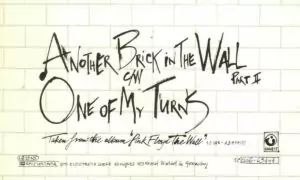Although medicine has reached the level when many diseases can be cured or at least effectively stopped, there are cases when nothing can help a patient survive. Terminal diseases such as cancer or AIDS, if not attended in time, can cause a person’s body to slowly degrade: organs shut down, the ever-increasing pain becomes unbearable, and sometimes life support apparatus is the only option doctors have to keep a patient from passing away. There are cases when people spend years connected to such an apparatus without any chance of being cured, or even if they are not hooked up to apparatus, they have to withstand excruciating pain—and not all patients (as well as their relatives) are able to continue living this way. This is where the widely-debated procedure of euthanasia comes in: sometimes, the seemingly best decisions doctors, patients, and family members can agree upon is to let the terminally-ill person die voluntarily, and modern medicine can make this process as easy as possible.

✅ AI Essay Writer ✅ AI Detector ✅ Plagchecker ✅ Paraphraser
✅ Summarizer ✅ Citation Generator
The opponents of euthanasia tend to call it “legalized murder,” but is there an alternative to having to spend months or even years in agony, knowing that there is still death awaiting in the end? If there were any kind of effectively working cryo-machines, like in science-fiction movies, allowing to freeze a patient and wake him or her up in the future when a cure for his or her disease is invented, there would probably be no need for euthanasia. However, the reality is more ruthless, and unfortunately, this dreaded procedure is sometimes the only way a person’s suffering can be stopped.
Generally speaking, euthanasia can be defined as assisted suicide. The ethical concerns surrounding this procedure are so serious that even in the wealthy developed countries, where people usually have more options in terms of treating their lives and bodies, euthanasia is still prohibited and considered to be a crime. For example, according to the British National Health Service, assisting someone to pass away voluntarily is against the law, even if the circumstances of a patient are dire, and there is obviously no other option; for example, a doctor in the United Kingdom, agreeing to help a terminally-ill patient die, risks being prosecuted for 14 years in prison. As for the United States, the situation depends on the state in which the patient and the doctor are living, as well as on the circumstances surrounding each particular case. For instance, there is the well-known case of Karen Ann Quinlan: after having consumed a volatile mix of Valium, opioids, and alcohol, she almost died—her breath stopped twice within 15 minutes. Although doctors managed to revive her, she fell into a vegetative state, and could continue living only being connected to life support apparatus. Several months after the incident, Ann’s parents asked the hospital to disconnect her from the machine. After numerous legal perturbations, the hospital was obliged to follow her parents’ will—but even after having been disconnected, Ann lived—if a persistent vegetative state can be called a full life—for nine more years: in 1985, she died from pneumonia. Ann’s case is not the only one in the medical history of the United States, and perhaps it was cases similar to her’s that caused a number of states to adopt the laws allowing euthanasia in specific cases—for example, Oregon’s “Death With Dignity” act, adopted in 1994 (Medical News Today).
Euthanasia is not a decision made easily, and specialists point out that there are two kinds: voluntary euthanasia, which implies that a patient asking for it is conscious of his or her decision, and non-voluntary euthanasia, when a patient is in a coma, or is unable to make a well-informed decision due to other circumstances—as in Ann Quinlan’s case, for example (Care). One might ask what could cause a patient in treatment to make a choice to abandon life, and this is indeed a reasonable question. According to surveys conducted in such countries as the United States and the Netherlands, about a third of terminally-ill patients choose euthanasia because of having to live in severe pain almost all the time. When a person realizes that he or she is about to die, and that medicine cannot do anything to cure him or her, the quality of life of such a person drops significantly. Not only does this person have to spend his or her whole time in hospital beds, having to regularly take drugs and undergo medical procedures, but he or she also has to live with the fact that his or her plans and dreams are probably not going to come true, that there are no other options in his or her life besides struggling with illness. This causes people to fall into depression, the fear of losing dignity, feeling like they are a burden to their relatives, and so on. In addition to the psychological aspects of being terminally ill, many patients suffer from such physical conditions as incontinence, paralysis, breathlessness, nausea, or even the inability to eat. All these factors together may push a person towards making a decision that seems the most legitimate in such circumstances: to pass away without having to wait until death finally comes on its own (BBC).
Euthanasia is an extremely controversial procedure which has been causing public debates for a long time. On one hand, there is a strong conviction that every life is precious, that killing of any kind is immoral, and that there is always hope for a cure. On the other hand, there is severe suffering that terminally-ill patients have to go through day by day, sometimes for years; there is a low-quality life with no joy; there is, especially in poorer countries, people’s objective inability to pay for their relative’s constant hospital treatment. Both pro and contra arguments are rightful, solid, and cannot be neglected easily, so legalizing euthanasia or completely banning it will probably remain a debated problem in many progressive countries for decades.
Works Cited
Nordqvist, Christian. “Euthanasia and Assisted Suicide.” Medical News Today, MediLexicon International, 8 Apr. 2016, www.medicalnewstoday.com/articles/182951.php.
“What Is Euthanasia?” CARE, www.care.org.uk/our-causes/sanctity-life/what-euthanasia.
“Ethics of Euthanasia – Introduction.” BBC, BBC, www.bbc.co.uk/ethics/euthanasia/overview/introduction.shtml.
Follow us on Reddit for more insights and updates.





Comments (0)
Welcome to A*Help comments!
We’re all about debate and discussion at A*Help.
We value the diverse opinions of users, so you may find points of view that you don’t agree with. And that’s cool. However, there are certain things we’re not OK with: attempts to manipulate our data in any way, for example, or the posting of discriminative, offensive, hateful, or disparaging material.